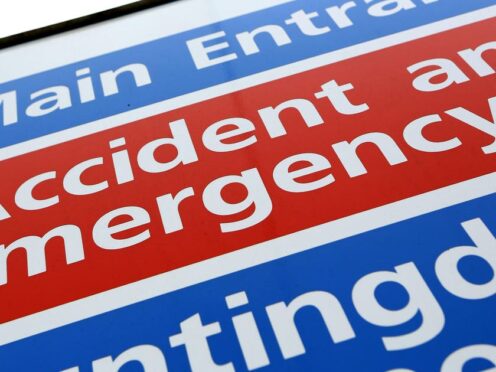The Government is spending billions of pounds every year on compensation for clinical negligence with “no effective plan” to bring these costs down, MPs have warned.
These events are a “burden to the public purse”, a report by the Public Accounts Committee (PAC) said.
The watchdog also slammed “unacceptable” delays by the Department of Health and Social Care (DHSC) in publishing its accounts, and raised concerns over the lack of a clear plan for stockpiling the likes of personal protective equipment (PPE) in the event of another pandemic.
According to the report, DHSC set aside more than £21 billion to cover clinical negligence in 2022/23, paying out more than £2.6 billion to claimants.
Of the total, £1.1 billion was paid in compensation for negligence in maternity and neonatal care, roughly a third of the total NHS spend on maternity services in 2021/22, the PAC said.
The watchdog warned DHSC “needs to urgently reduce clinical harm to ensure better patient outcomes and free up taxpayer money”.
The report said: “The cost of clinical negligence to the NHS in England relative to the population served is significantly higher than those of similar health and social care systems.”
It added that DHSC and NHS England “recognised that getting patient safety right and reducing the number of incidents leading to clinical negligence claims, is a big objective”.
Dame Meg Hillier, chairwoman of the PAC, said: “The Government is spending billions on clinical negligence claims.
“An effective plan to reduce these costs would be an effective plan to reduce clinical harms, but such a plan does not yet exist.”
According to the PAC, Parliament expects DHSC’s financial accounts to be published before the summer recess each year, but this target has not been met since 2019.
The department has instead published its accounts in January each year, six months after the deadline.
The PAC said this “unacceptable” delay – driven by “fundamental failings in the financial controls” of the UK Health Security Agency (UKHSA) and backlogs in local NHS audits – is “undermining parliamentary accountability for taxpayers’ money”.
The PAC said DHSC has committed to bringing forward its timetable by one month each year, meaning it would not publish accounts before the summer recess until 2029.
In 2023, the PAC recommended UKHSA should put robust financial controls and processes in place.
However, in January it emerged that UKHSA had failed to produce timely auditable accounts for the second consecutive year.
The PAC described this “fundamental weakness” in basic financial reporting as “unacceptable”.
UKHSA was established in 2021, taking over Public Health England.
The spending watchdog said DHSC “repeatedly used the fact that UKHSA is a relatively new organisation, along with its operational priority of delivering public health protection, as the reasons for them not getting fundamental accounting right”.
Dame Meg added: “The proper safeguarding and robust accounting of how taxpayers’ money is spent is not an optional extra.
“The fact that UKHSA’s accounts have been unable to be properly audited for two years in a row – a very rare occurrence for a public body – is deeply concerning.
“But our report also raises wider issues speaking to the DHSC’s grip on spending, and illustrate ongoing and tragic failures experienced by people using the health service.”
The PAC report also raised concerns about the lack of a clear plan on stockpiling items like personal protective equipment (PPE) in the event of another pandemic.
In January, DHSC accounts revealed some £9.9 billion of the £13.6 billion spent on PPE has been written off because it was unusable or its value has crashed since the pandemic.
The PAC warned: “Disposing of this inventory before establishing a clear stockpiling strategy creates the risk that the department disposes of items which it may need later.”
A DHSC spokesperson said: “We do not recognise a number of claims within this report, and it is wrong to conclude that UKHSA’s financial controls are weak.
“Negligence claim volumes are decreasing in the NHS and we are committed to boosting patient safety within the NHS, especially in maternity settings, and we have made improvements in this area.
“Furthermore, we took swift action to procure PPE at the height of the pandemic and continue to prioritise pandemic preparedness with UKHSA to ensure the UK is best-placed to tackle future health emergencies.”
A UKHSA spokesperson said: “We have made great progress in our financial management and controls and have a good plan in place to strengthen this further.”
